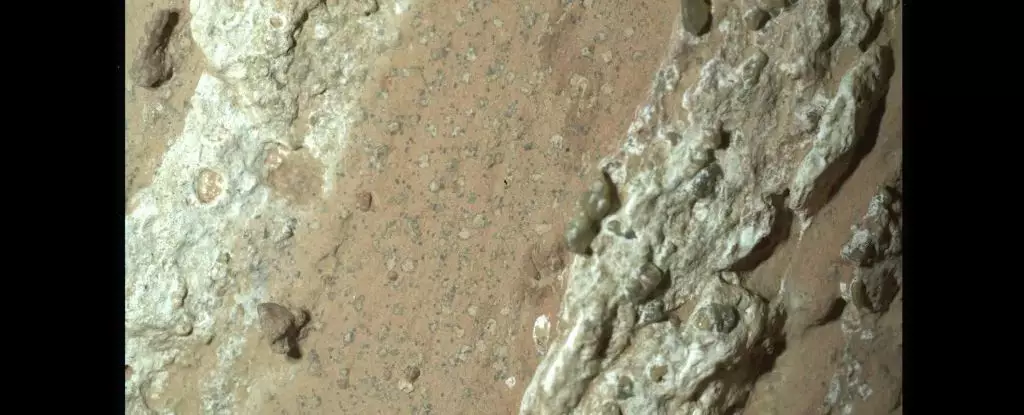The discovery of Chevaya Falls on Mars by the Perseverance rover has given scientists new hope in the search for signs of ancient life on the red planet. This rock, found on the edge of an ancient river valley, contains veiny sedimentary material with organic compounds and leopard-like spots that suggest the presence of chemistry that could have supported microbial life billions of years ago.
The conditions on Mars in the past are thought to have been hospitable to life as we know it. With the presence of water, chemistry, and the potential for the formation of the building blocks of life, scientists believe that if life did exist on Mars, it would have been similar to early microbial life on Earth. This discovery raises the question of whether life once thrived on Mars and if microbial organisms still exist below the surface.
Chemical Reactions and Organic Material
The presence of organic material in Chevaya Falls is a significant find, as it provides evidence of past biological activity. While organic material can also be produced through non-biological processes, the combination of organic compounds, leopard-like spots, and other signs of potential biological activity in the rock make it a compelling target for further study.
Water and Mineral Composition
The rock’s composition, which includes layers of calcium sulfate, hematite, olivine, and white spots bordered by black rings, suggests a complex history of formation. The presence of iron and phosphate within the black borders of the spots indicates potential chemical reactions that could have provided energy for microbial life. The repeated exposure to water and volcanic conditions may have also contributed to the rock’s unique features.
While the Perseverance rover has completed its analysis of Chevaya Falls, a sample of the rock has been collected and stored for potential retrieval by a future spacecraft. This sample represents a valuable opportunity to study the rock in more detail and uncover further evidence of past life on Mars. The discovery of Chevaya Falls has renewed scientists’ interest in exploring Mars further and potentially sending human missions to the red planet.
The discovery of Chevaya Falls on Mars has provided valuable insights into the planet’s geological and potentially biological history. While the presence of organic material and unique mineral compositions in the rock point to the possibility of past life on Mars, further research and exploration are needed to confirm these findings. The search for life on Mars continues, and discoveries like Chevaya Falls bring us one step closer to unlocking the mysteries of our neighboring planet.


Leave a Reply